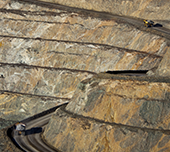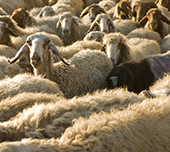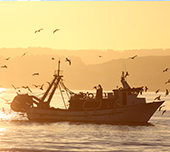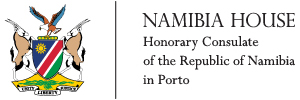ABOUT NAMIBIA
COUNTRY CONTEXT
Namibia became independent in 1990 and has since then a good governance with multi-party democracy, a stable multi-racial, basic civic freedom, and respect for Human Rights. Namibia inherited a well-functioning physical infrastructure, a market economy, rich natural resources, and a relatively strong public administration.
Namibia is located on the West Coast of Southern Africa between South Africa in the south, Botswanna in the east and Angola in the north and is divided in 13 regions. With a household population of 2 066 398 (2010), Namibia is one of the three most sparsely populated countries in Africa. The average population density is around 2.6 people per square kilometre.
ECONOMY OVERVIEW
Namibia has maintained a track record of consistent economic growth, moderate inflation, limited public debt, and export earnings. Namibia’s economy is closely linked to South Africa’s economy through trade, investment, and common monetary policies. The Namibian dollar is pegged to the South African rand, making many economic trends (including inflation) closely follow those in South Africa. Namibia is also a member of the Common Monetary Area, SACU and SADC, the latter guaranteeing preferential commercial links with any of the remaining 13 countries which comprise this organization, representing a market of 190 million consumers.
GDP is growing around an average rate of 5% per year since 2009 (Bank of Namibia, 2015). Inflation has been stable and the structure of production and trade has remained essentially unchanged over the past two decades. The services sector has accounted around 60% of total GDP since 1990 World Bank, 2014). Mining, livestock rearing, fishing, metallurgy, and food processing have been mainstays of the economy, with construction growing rapidly in recent years.
Mining provide the majority of export revenue, followed by fish, tourism, livestock, logistics services, Africa’s best beer, beef, and grapes.
INFRASTRUCTURE
The country has a well-established road network, of which approximately 6% are paved. The two major development projects, the Trans-Caprivi Highway and the Highway TransKalahai, gives access to Botswana, Zimbabwe, Zambia, and South Africa, Namibia and connects with other countries in the South African Development Community (SADC) to trade, travel and communication.
The two ports of Namibia, Walvis Bay and Lüderitz, are administered by the Namibian Ports Authority, a state organization established in 1994. Lüderitz is traditionally a fishing port with a new dock for containers and cargo, completed in 2000. The port is strategically located to supply the southern Namibia and the North Cape.
Walvis Bay, the only port on the high seas, is an economical and safe option for the trade import and export of the country, especially the southern part, central and western Africa and Europe.
In terms of transportation, the national airline of Namibia, Air Namibia, maintains international direct flights to Frankfurt and other destinations, regional and domestic flights. Namibia's railway network is run by TransNamib Holdings Ltd and the main line runs from the South African border via Keetmanshoop to Windhoek, Okahandja, Swakopmund and Walvis Bay.
Namibia has also one of the best infrastructure systems and service delivery in terms of communications in Africa.

Namibia is the fourth largest exporter of non-fuel minerals in Africa and has one of the continent's longest-established mining industries. The diamond is the most important source of revenue, but uranium, copper, lead, zinc, magnesium are also important to the industry

Livestock ranching (cattle, sheep and ostriches) accounts for the bulk of commercial farm output. While most cattle and sheep are sold live to South Africa, since independence an increasing proportion of cattle are marketed to export approved abattoirs which sell processed beef predominantly to EU countries..

Namibia has access to the rich fishing grounds of the south-east Atlantic where the Benguela current system supports a range of commercially-exploitable fish, including pilchard, anchovy, mackerel, tuna and hake, along with rock lobster and crab. At independence Namibia established a 200-mile exclusive economic zone (EEZ) where it operates a conservationist fisheries management regime based on sustainable catch levels. The government has also expanded shore-based processing capacity, adding to existing value-adding activities such as pilchard canning and fishmeal/oil production.

Tourism is becoming an increasingly important source of income and employment generation for Namibia. In accordance with the White Paper the Government on tourism, strict standards of protection, conservation and control are practiced to ensure the sustainable use of natural resources by the Namibian tourism industry. The future of tourism development will be closely monitored with an emphasis on high quality tourism and transport capacity.
